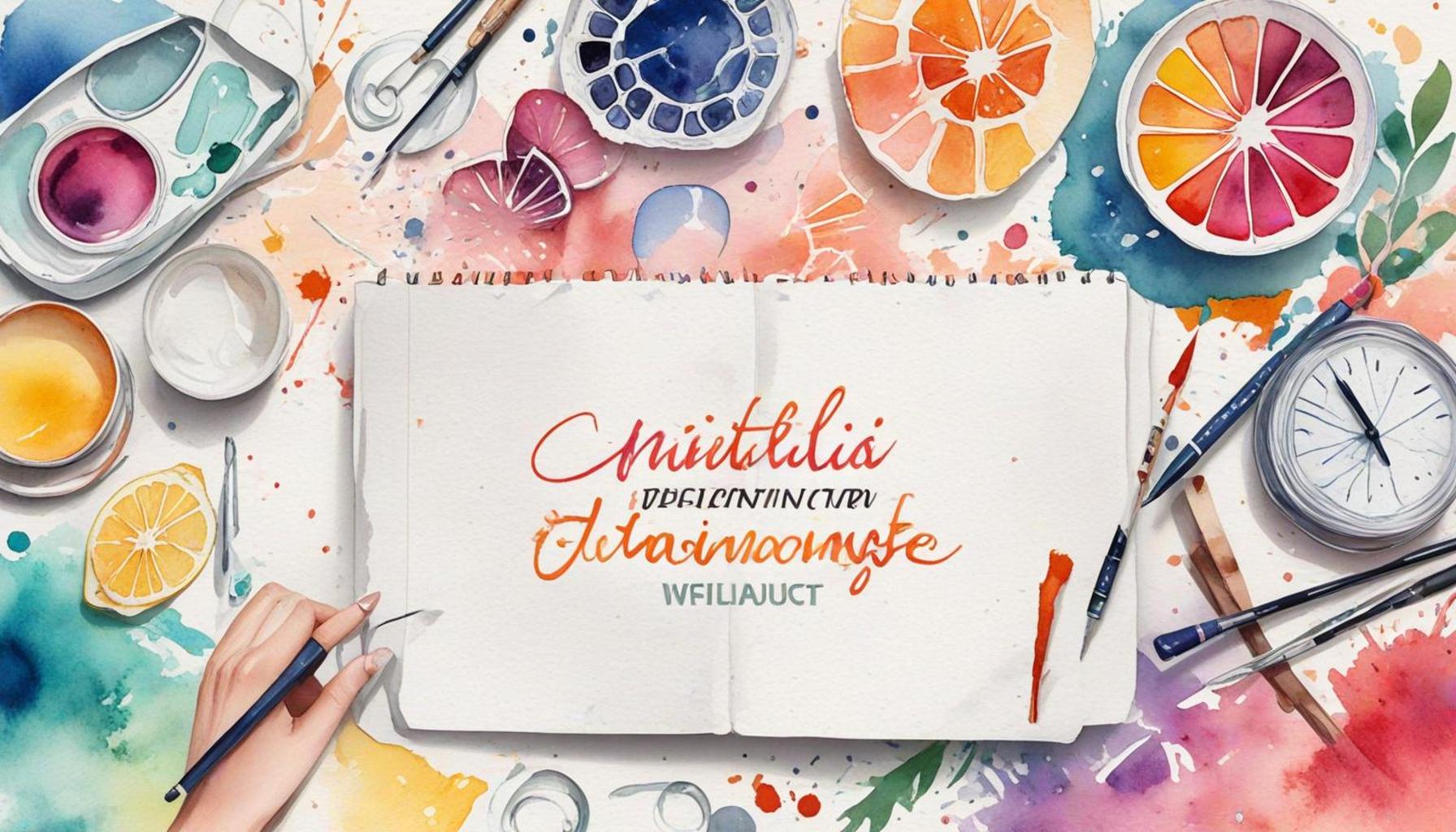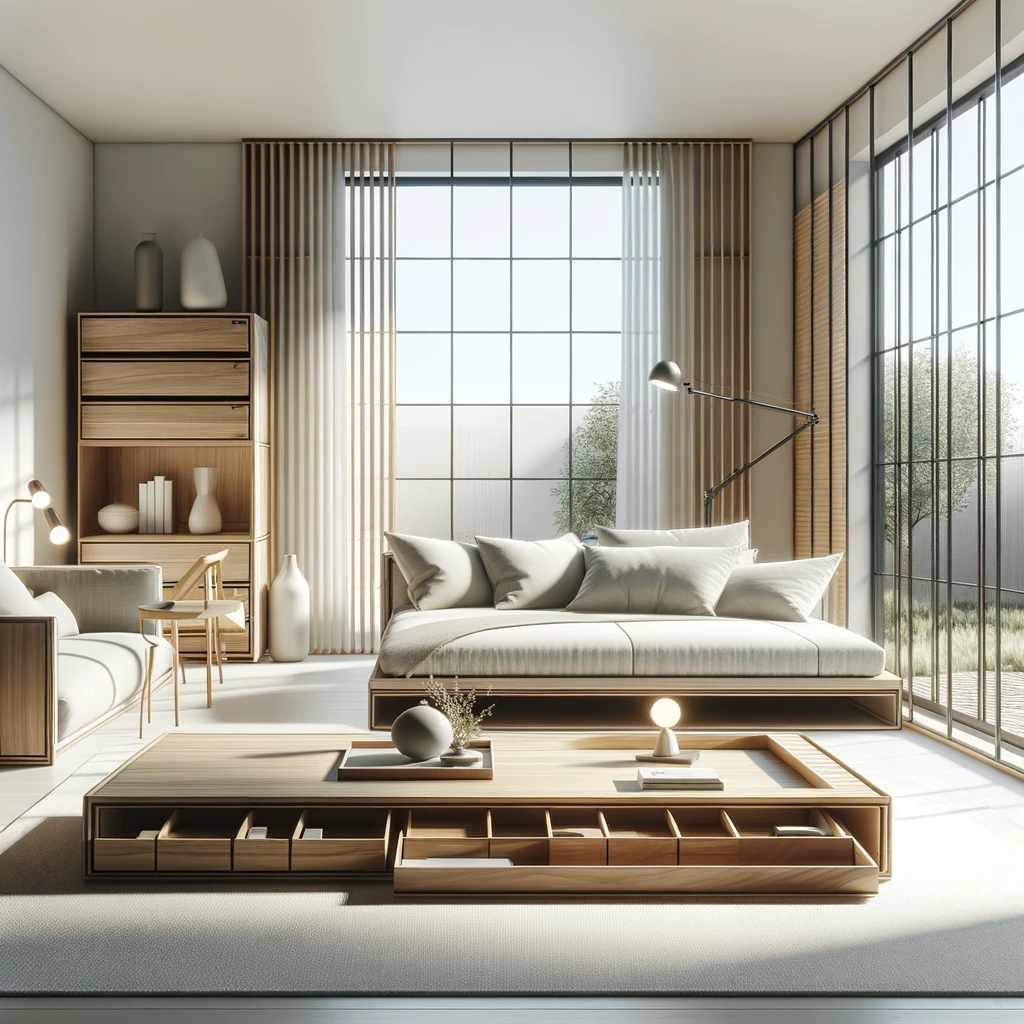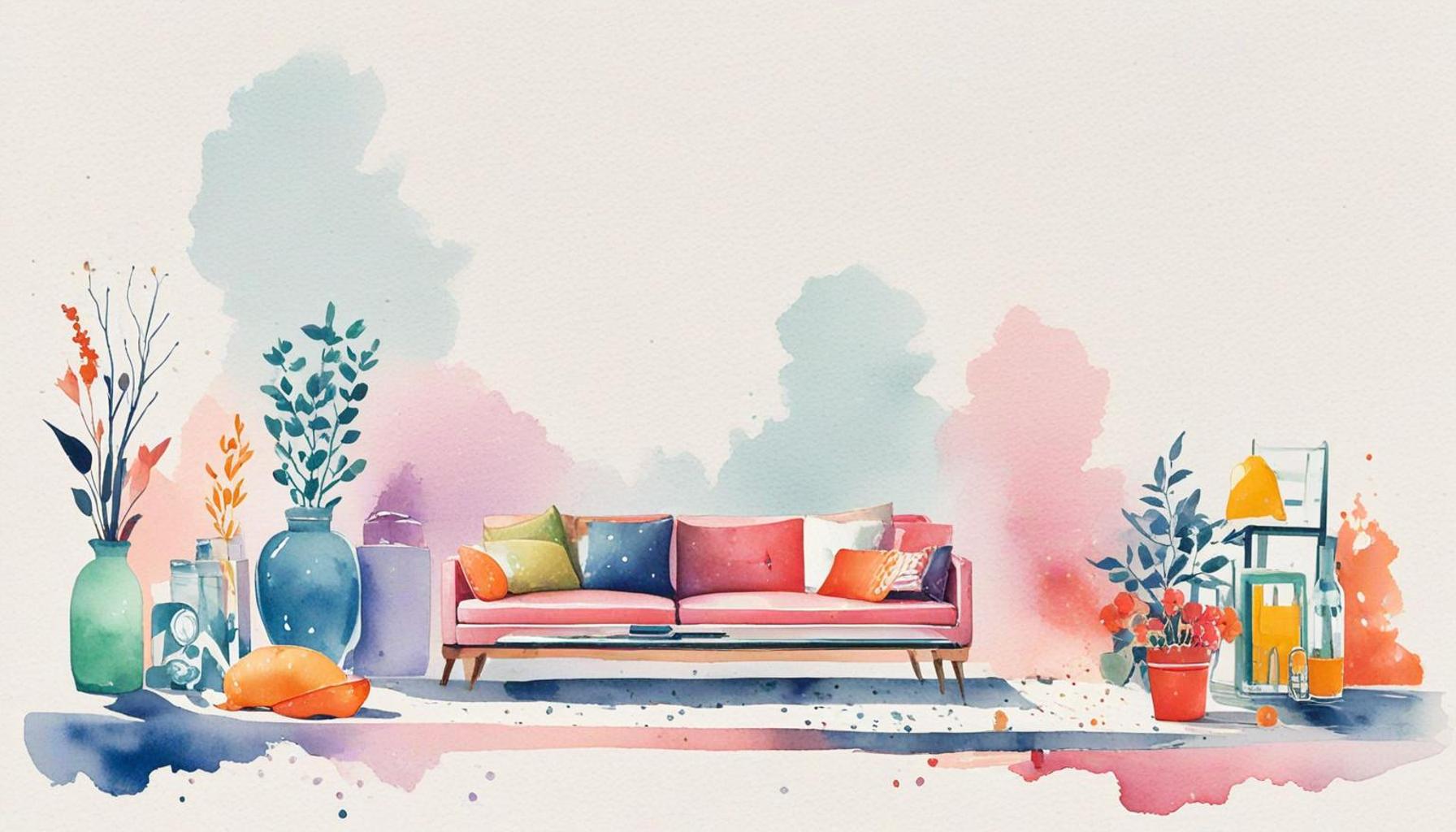How intentional design can transform personal organization and promote a minimalist lifestyle

The Importance of Personal Organization
In today’s fast-paced world, where the demands of work, life, and technology can easily become overwhelming, maintaining personal organization is more crucial than ever. With countless distractions from social media, streaming services, and endless notifications, many individuals find themselves lost in the chaos. This environment often leads to increased stress and decreased productivity, making the need for effective organization strategies paramount.
This is where intentional design steps in as a transformative solution. By purposefully designing our surroundings and systems, we can create spaces that are not only functional but also aligned with our personal goals and lifestyles. Intentional design encourages us to prioritize our needs and eliminate excess, leading to a more focused and fulfilling way of living.
Key Principles of Intentional Design
By embracing the principles of intentional design, individuals have the opportunity to cultivate an environment that enhances their overall well-being. Here are some vital aspects of how this approach can make a significant difference:
- Streamlined Spaces: A cluttered environment can hinder focus and productivity. By clearing out unnecessary items and organizing belongings thoughtfully, individuals can create a serene space that enhances concentration. For instance, adopting a minimalist approach with fewer decorative items or furniture can promote a calm atmosphere conducive to work or relaxation.
- Functional Furniture: Choosing furniture that serves multiple purposes is an effective way to optimize limited space, especially in urban environments. For example, a coffee table that doubles as storage can help keep living areas tidy while offering functionality. This type of design not only saves space but also encourages the use of essential items that add value to daily life.
- Thoughtful Layouts: Organizing spaces to create efficient workflows can significantly reduce stress. This might involve arranging a home office to minimize distractions or designing a kitchen with an intuitive layout for meal preparation. Such careful consideration of how spaces are organized can lead to smoother daily routines.
As more people seek to simplify their lives, understanding the principles of intentional design offers valuable insights into how we can reclaim our mental clarity and enhance our quality of life. A well-organized space has been linked to increased productivity and lower stress levels, creating a ripple effect that can vastly improve overall well-being. Furthermore, adopting a sustainable approach to living through intentional design can benefit both individuals and the environment by encouraging mindful consumption and reducing waste.
In conclusion, by embracing the core concepts of intentional design, anyone can cultivate an atmosphere that fosters both organization and tranquility. This journey toward a more intentional lifestyle promises not only enhanced personal efficiency but also a deeper sense of satisfaction and peace in our everyday lives.

DIG DEEPER: Click here to learn about conscious consumerism
The Role of Intentional Design in Personal Organization
To understand how intentional design can revolutionize personal organization, it is essential to recognize its foundational elements. Intentional design prioritizes purpose, practicality, and aesthetics, ensuring that every item and space serves a significant role in our lives. This strategic approach invites individuals on a journey towards a minimalist lifestyle, where less truly becomes more.
Creating Purposeful Spaces
Intentional design starts with assessing what is truly necessary in our environments. A vital first step is to declutter and identify items that do not contribute meaningfully to our day-to-day activities. The process involves asking critical questions about each item: Does it serve a function? Does it bring joy? This introspective method nurtures a sense of focus and clarity while allowing space for only the essentials.
Research indicates that individuals who experience organized spaces report a higher level of satisfaction in their lives. According to a study published in the journal Personality and Social Psychology Bulletin, clutter not only detracts from productivity but also contributes to feelings of anxiety and decreased mood. By conducting a purposeful curation of possessions, individuals can create an environment that uplifts rather than detracts from their emotional well-being.
Implementing Effective Systems
Beyond decluttering, intentional design involves crafting systems and structures that promote efficiency. Here are several strategies that exemplify this concept:
- Designated Zones: Establish specific areas for distinct activities, such as work, relaxation, or exercise. This separation encourages mental discipline; transitioning between these zones can signal to the mind the need to switch focus.
- Daily Routines: Integrating design principles into daily routines can optimize time management. For instance, setting aside moments each morning to reset spaces — like tidying a workspace or organizing a kitchen counter — significantly boosts functionality and creates a sense of calm.
- Smart Storage Solutions: Leveraging storage options that maximize space while remaining visually appealing can further simplify organization. Consider collapsible furniture or under-bed storage to maintain a clutter-free environment.
Adopting these systems leads to a streamlined workflow, allowing individuals to reclaim their time and mental space. Moreover, simplifying tasks further aligns with the minimalist philosophy of maximizing efficiency while minimizing excess.
Ultimately, the interplay between intentional design and personal organization fosters an atmosphere where individuals can thrive. By committing to a minimalist approach, they can reduce distractions, enhance clarity, and focus on what truly matters, paving the way for a more harmonious life.
How Intentional Design Can Transform Personal Organization
The concept of intentional design encompasses more than just aesthetics; it is a holistic approach that merges functionality with clarity. This approach can significantly enhance personal organization and encourages a minimalist lifestyle by promoting efficiency and reducing distractions. When elements within our environments are intentionally designed, they naturally guide our behaviors, simplifying tasks and decision-making processes.By incorporating minimalist principles into intentional design, individuals can create spaces that are not only visually appealing but also conducive to productivity. For instance, a decluttered workspace that utilizes multifunctional furniture allows individuals to focus on their tasks without the overwhelming presence of unnecessary items. This not only improves focus and organization but fosters a sense of calm, which is a core component of a minimalist lifestyle.Moreover, intentional design enhances our ability to curate possessions meaningfully. When one adopts a minimalistic mindset alongside intentional design, it becomes easier to make conscious decisions about what to keep. This practice aligns with the principle of “less is more,” leading to a more fulfilling living experience without the burden of excess.
Benefits of Integrating Intentional Design and Minimalism
Let’s explore how intentional design synergizes with minimalism to create a more organized life.
| Category 1 | Category 2 |
|---|---|
| Enhanced Focus | Intentional design reduces clutter, promoting clearer thoughts and better concentration. |
| Improved Efficiency | Key items and tools are easily accessible, streamlining daily routines. |
Through these advantages, intentional design and minimalism pave the way for a lifestyle that prioritizes clarity and purpose. Potential adopters should consider how reimagining their spaces can lead to transformative effects on both personal organization and overall well-being. The journey to a minimalist lifestyle infused with intentional design is not just about reducing items; it’s about creating meaningful environments that resonate with one’s core values and aspirations.
DISCOVER MORE: Click here to enhance your personal organization
Designing for Mindfulness and Flexibility
Another pivotal aspect of intentional design is its ability to cultivate mindfulness and flexibility within personal organization. In a world increasingly characterized by constant change and distraction, fostering a mindful approach to living can create significant advantages. The integration of design concepts can streamline our environments not only for current needs but also in anticipation of future requirements.
Incorporating Mindfulness into Daily Life
Mindfulness within personal organization emphasizes being present in the moment while managing one’s space and tasks. This can be achieved by creating multi-functional spaces that encourage reflection and productivity alike. For example, rather than a traditional desk setup, consider a convertible workspace that also supports relaxation, like a meditative corner. This setup draws attention to the dual purpose of the space, allowing individuals to engage in creation and contemplation seamlessly.
Furthermore, design elements like natural light and greenery play a colossal role in enhancing mindfulness. Studies published by institutions such as the University of Queensland show that exposure to natural elements can reduce stress while increasing concentration. By intentionally designing spaces where light flows and plants thrive, individuals can create an atmosphere that nurtures mental clarity and reduces overwhelming feelings often tied to clutter.
Building Systems with Flexibility in Mind
The ability to adapt to changing circumstances is crucial in modern life. Intentional design encourages the implementation of flexible systems that can evolve as needs change. Here are some strategies to promote adaptability:
- Modular Furniture: Investing in modular or adjustable furniture allows for the easy reconfiguration of spaces to accommodate different activities or gatherings. Items that can be expanded, moved, or transformed help in achieving a tailored response to each situation, whether it be a large meeting or a quiet evening of solitude.
- Digital Organization Tools: Utilizing technology to streamline tasks and collaboration can significantly enhance flexibility. Applications like Trello or Notion can facilitate the organization of projects, while minimizing reliance on physical reminders or notes, which can quickly clutter up spaces.
- Fluid Schedules: Intentional design can also extend to scheduling. By creating visual schedules or planners that can be easily updated and adjusted, individuals can respond to shifting priorities without feelings of chaos or disorganization.
By fostering a climate of adaptability, intentional design helps individuals feel more empowered and less overwhelmed. Whether it’s utilizing technology or incorporating versatile layouts in living areas, these strategies ensure that personal organization can be tailored to each person’s evolving needs.
The Impact of Community and Collaboration
Intentional design doesn’t just transform individual organization; it also influences community dynamics. In both work and personal spaces, collaborative environments where design is thoughtfully considered can enhance productivity and cohesion. A well-organized open-plan office, for example, designed with collaborative workstations alongside quiet areas fosters interaction and also allows for reflective tasks without the pressures of distraction.
Moreover, as communities adopt minimalist principles, they create spaces that prioritize shared resources, such as co-working areas and communal gardens. This not only leads to more sustainable living practices but also deepens social connections as individuals share spaces and experiences, reflective of a collective minimalist lifestyle.
Ultimately, the fusion of mindfulness, flexibility, and community in intentional design offers a sustainable roadmap towards achieving personal organization and embracing minimalism fully. By prioritizing environments that support both individual needs and collaborative engagement, people can enhance their productivity and overall well-being, contributing to a lifestyle that is as enriching as it is streamlined.
DISCOVER MORE: Click here for tips on creating efficient spaces
Conclusion: Embracing Intentional Design for a Balanced Life
The journey toward enhanced personal organization and a minimalist lifestyle is significantly enriched through the principles of intentional design. By reimagining our spaces with mindfulness and flexibility in mind, we can create environments that not only reduce clutter but also inspire creativity and focus. The subtle intertwining of modular furniture, digital tools, and natural elements serves as a cornerstone for fostering adaptable spaces that evolve with our needs.
Moreover, the positive ripple effects of intentional design extend beyond individual experiences, shaping community interactions and collective engagement. As we foster environments that prioritize shared resources and collaborative areas, we cultivate a sense of belonging and purpose, forming deeper connections with those around us. This process of redefining both personal and collective spaces encourages a lifestyle that embraces minimalism without compromising on comfort or functionality.
As the minimalist movement garners momentum, the inherent beauty of simplicity becomes increasingly appealing. The reduced reliance on excess not only alleviates stress but also promotes a clearer mindset, allowing for better decision-making and increased well-being. Moving forward, adopting intentional design principles can empower us to curate our surroundings deliberately and thoughtfully, making choices that align with our personal values and aspirations.
In essence, the transformative power of intentional design paves the way for a fulfilling life steeped in clarity and connection. By cultivating organized spaces that reflect our priorities, we can embrace minimalism as a lifestyle—one that contributes to greater peace of mind and enriched living.


